Introduction
AWS cloud hosting costs can be complex to navigate, requiring a thorough understanding of pricing structures and factors that influence expenses. This article provides a comprehensive overview of AWS pricing models, key components of AWS costs, and strategies for optimizing expenses. From understanding storage costs and computing power costs to managing networking costs and data transfer fees, businesses can gain insights into cost-effective solutions.
The article also explores example architectures and provides tips for reducing AWS costs, including leveraging spot instances, reserved instances, and fully managed services. By implementing these strategies and staying informed about AWS updates, organizations can maximize their investments in AWS while maintaining operational efficiency and innovation.
How AWS Pricing Works
Comprehending AWS cloud hosting expenses requires an understanding of AWS's pricing system, which operates on a pay-as-you-go model. This approach means you are charged only for the resources you consume, a concept that is different from the amount calculated by multiplying consumption by price. The actual expense is determined by factors such as the type and size of resources used, the duration of their use, and any added services or features.
When it comes to pricing, AWS applies it to a Stock Keeping Unit (SKU), which is the most granular unit of what you purchase. This SKU can carry either a list price, which is the base rate that includes any standard discounts, or a contracted/custom price that is tailored to your organization, encompassing negotiated discounts and credits. It's crucial to note that these pricing models evolve to meet market and business demands.
As you design your AWS infrastructure, consider the architecture of your applications. Factors such as the number of deployments, whether the application will operate in a single or multiple regions, and whether to use one or all Availability Zones in a region will impact both system design and expenses. Additionally, using tools like Amazon CodeGuru Profiler can help you monitor and optimize your applications, potentially leading to more cost-effective operations.
AWS's continuous innovation provides opportunities for savings and performance enhancements. For example, the recent introduction of Amazon S3 Express One Zone promises significantly faster access to frequently requested data, potentially impacting storage costs and performance.
Eyal Estrin, an architect specializing in information security and leveraging cloud technology, emphasizes the importance of comprehending these intricacies and staying updated on the latest AWS offerings to effectively utilize cloud computing. His expertise in the area demonstrates a profound comprehension of the dynamic nature of pricing and services.
To summarize, hosting on AWS is impacted by various factors, such as the architecture of your application, the resources you choose, and the specific pricing model you select. Keeping informed about AWS updates and utilizing performance optimization tools can lead to more efficient and cost-effective operations in the computing environment.
Key Components of AWS Costs
As companies more and more transfer their operations to the online storage system, comprehending the complexities of hosting expenses in the online storage system becomes crucial. Amazon Web Services (AWS), a leader in cloud computing, offers a suite of tools designed to help users manage their expenditures effectively. One notable example is GoDaddy, which has harnessed AWS's capabilities to optimize their batch processing jobs, ensuring customer satisfaction through data-driven decisions.
AWS's pay-as-you-go pricing model provides flexibility, allowing businesses like GoDaddy to scale services in alignment with their needs. However, this model also necessitates vigilant monitoring to prevent unplanned expenses. For instance, charges for EC2 instances vary based on type, size, and region, while storage services such as S3 bill according to data usage.
Using tools like Amazon CodeGuru Profiler can aid in identifying inefficiencies in code performance, as demonstrated by the integration with Apache Flink's Flame Graphs for visualizing stack traces. Efficient code results in decreased resource usage, which has a direct effect on expenses.
Moreover, industry experts emphasize the distinction between price and cost, noting that cost is a function of consumption multiplied by price. Understanding the nuances of list prices versus contracted prices—where the latter includes negotiated discounts—is critical for managing expenses.
AWS's market position as a versatile and cost-effective platform is highlighted by its extensive adoption across various sectors. Nevertheless, in the midst of intense competition in the market for cloud services, it is paramount for businesses to utilize AWS's tools for optimizing expenses in order to maintain a competitive edge while effectively managing their cloud infrastructure.
Storage Costs
Understanding AWS storage solutions is essential for managing cloud hosting costs effectively. AWS's prominent services like Amazon Elastic Block Store (EBS) and Amazon Simple Storage Service (S3) offer flexible storage options tailored to various information types. Block storage with EBS is perfect for transactional information requiring rapid access and updates, whereas S3 provides scalable object storage suitable for vast amounts of unstructured information.
Pricing varies based on storage volume, transfer rates, and selected features. For instance, S3 expenses can increase if storage capacity grows faster than reductions in cost per unit. Furthermore, egress fees—charges for information transferred out of AWS to the internet or other cloud providers—can accumulate, especially for large-scale movements. These fees are usually measured in GB or TB per month, highlighting the importance of strategic transfer planning.
Companies looking to enhance their infrastructure expenses and gain greater resource control have migrated from AWS to bare-metal solutions, attaining financial savings and operational independence. For example, a company serving customers mainly on the public cloud found it necessary to switch to a dedicated facility to offer reliable, cloud-independent services. Such strategic decisions highlight the importance of thoroughly evaluating storage options and associated costs in alignment with business requirements and customer commitments.
The dynamic nature of technology and storage demands that businesses remain vigilant, leveraging insights from data to inform their decisions and capitalize on the evolving landscape of AI, as discussed by industry experts at events like Data Center World 2023. With a proactive approach to storage management, organizations can ensure their cloud investments align with their operational efficiency and innovation goals.
- EBS Pricing
Maximizing savings for Amazon Elastic Block Store (EBS) necessitates a strategic methodology to storage provisioning, where comprehending your application's storage requirements is essential. It's not just about the amount of storage capacity you reserve; it's also about how you manage the input/output operations (I/O) that can have a substantial effect on expenses. Companies like GoDaddy have acknowledged the significance of being data-driven, customizing their computing resources to the requirements of their data-intensive operations, guaranteeing that they are not over-provisioning or underutilizing their EBS volumes. According to Eyal Estrin, an architect specializing in cloud and information security, individuals new to AWS can gain significant advantages from tools that offer a more transparent view of anticipated expenses, aiding in the effective planning of budgets and the identification of opportunities for reducing expenses. Moreover, the pay-as-you-go pricing model of AWS services offers the flexibility to scale resources in accordance with actual usage patterns, which is essential for dynamic applications that require rapid scaling to respond to workload changes. By taking into account these factors and embracing a managed service approach when suitable, organizations can achieve a balance between expenses and performance, guaranteeing effective and scalable storage solutions in the cloud.
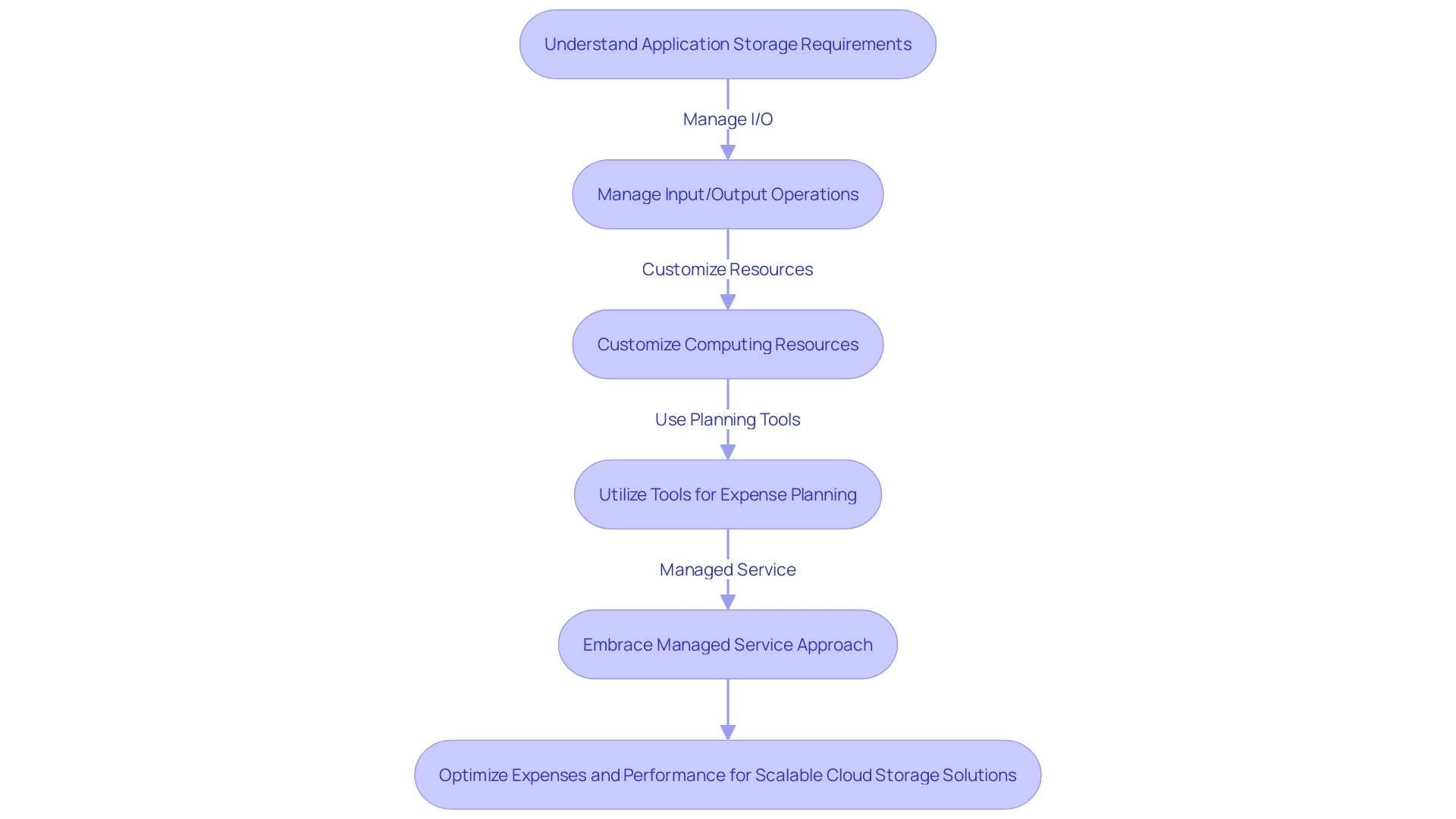
- S3 Pricing
The pricing of Amazon Simple Storage Service (S3) is directly linked to the amount of information stored, the quantity of outbound information transfer, and the number of requests made. These factors are pivotal when determining the most economical approach to utilizing S3 services. With list prices serving as the baseline for S3 pricing, it's essential to recognize that these can be further tailored through negotiated contracted or custom prices specific to an organization, potentially offering discounts and credits. Additionally, as the volume of information expands rapidly, it is essential to comprehend the intricacies of S3 pricing models to prevent unforeseen costs. By exploring the complexities of cloud pricing structures and their connection to storage and transfer patterns, organizations can strategically manage S3 expenses. This level of understanding is not only advantageous for optimization of expenses but also for maintaining efficient information management practices across lakes and warehouses, which are essential components of any contemporary information structure. As such, leveraging a modern data architecture on AWS allows for the scalable building of data lakes, compliance with unified data access, and the ability to make decisions with agility at scale.
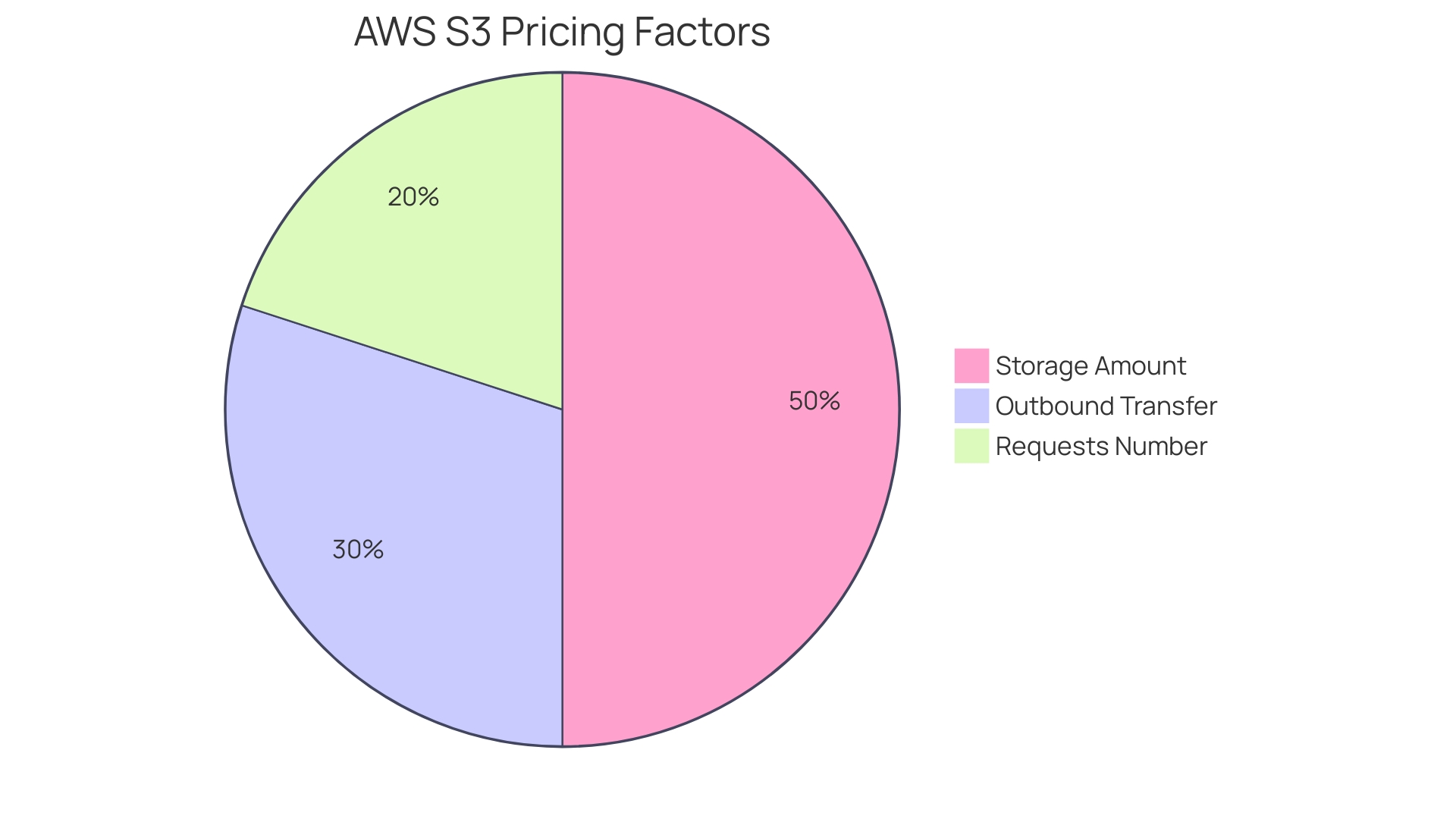
Computing Power Costs
Managing the expenses linked to cloud computing power is a crucial undertaking for organizations utilizing AWS services. AWS Elastic Compute Cloud (EC2) stands as a cornerstone offering, providing scalable computing resources tailored to meet the needs of varied workloads. To truly harness the cost-efficiency of EC2, it's vital to understand the intricate details of its pricing models. AWS has structured its pricing to accommodate different usage patterns, ensuring that businesses can select the most economical option that aligns with their operational demands.
Among the options available, the On-Demand pricing model offers the greatest flexibility, allowing businesses to pay for compute capacity by the hour or the second with no long-term commitments. This model is particularly advantageous for applications with irregular workloads that cannot be interrupted. For more predictable workloads, Reserved Instances provide a substantial discount (up to 75%) compared to On-Demand instance pricing, in exchange for a commitment to use a specific instance type over a one or three-year period.
Furthermore, the introduction of Amazon EC2 Capacity Blocks for ML has revolutionized how companies manage their machine learning workflows. This new feature enables customers to reserve GPU instances, such as NVIDIA H100 Tensor Core GPUs, for fixed blocks of time, thereby providing certainty and eliminating the need for long-term commitments.
Maximizing expenses also involves using AWS's Elastic Container Service (ECS) with the EC2 launch type effectively. A prudent selection of instance types, based on the application's resource requirements, and leveraging ECS Auto Scaling to adjust the number of tasks dynamically, can result in considerable savings.
For those particularly concerned with data transfer expenses, it's noteworthy that when workloads are optimized, the expenditure is predominantly determined by S3 bandwidth. Actually, a finely adjusted basic workload could lead to expenses as small as ten cents per terabyte.
By combining strategic planning with the insights provided by AWS's cost estimation tools, organizations can effectively forecast their expenditures and explore potential cost-saving opportunities. This proactive approach is priceless, particularly for those new to the AWS ecosystem, guaranteeing that their journey into computing in the sky is both efficient and cost-effective.
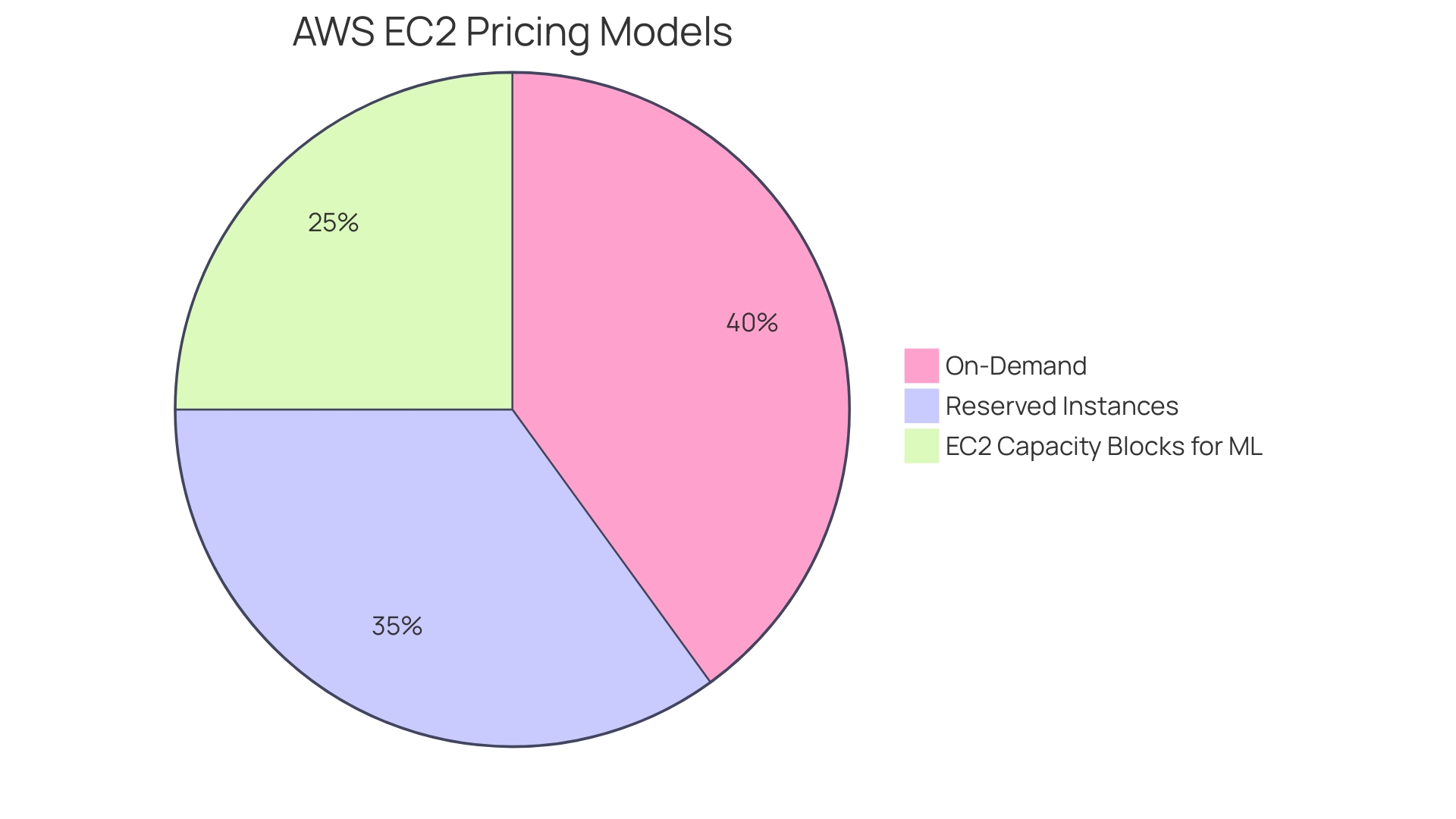
- EC2 Pricing
Amazon EC2 provides scalable computing capacity in the Amazon Web Services (AWS) cloud, allowing users to run applications with ease. When considering EC2 pricing, the factors that influence the expenses include the selection of instance type, size, the chosen operating system, and the amount of data transferred. Strategic selection and management of EC2 instances is critical for cost-efficiency. For example, GoDaddy, a worldwide frontrunner in internet services for business owners, utilized AWS's optimization tools to improve batch processing tasks, resulting in substantial savings and improved customer satisfaction. Similarly, BMW Group's adoption of a code-centric analytics platform demonstrates how cloud resources, when effectively utilized, can drive high-value innovation. Furthermore, Vertex Pharmaceuticals' utilization of machine learning for drug discovery emphasizes the significance of resource optimization to minimize expenses while accomplishing essential analysis on a large scale. By implementing AWS optimization strategies, organizations can ensure they only pay for the resources they need, thus maximizing their investments in AWS.
- Load Balancer Pricing
To comprehend the intricacies of load balancer pricing, it's essential to recognize that it fluctuates based on several elements, like the volume of load balancer instances, the extent of data transfer, and the selection of supplementary features. The fundamental principle of load balancing can be likened to ensuring that every waiter in a bustling restaurant can serve guests promptly and proficiently. In a similar vein, a load balancer distributes user requests (or 'guests') across servers ('waiters'), to maintain an optimal balance and prevent any server ('waiter') from becoming overwhelmed.
To elucidate, prices for these services are tethered to a Stock Keeping Unit (SKU), which embodies the most elementary unit of what you're acquiring. This price is distinct from cost, which is derived from the formula: Consumption x Price. SKUs typically come with a list price, the foundational rate that includes any rudimentary discounts. Conversely, contracted or custom prices are tailored to an organization, encompassing negotiated discounts or credits.
For example, Chess.com, the top online chess platform with a user base surpassing 150 million, utilizes such web-based services to offer a smooth experience to millions of players every day. The company's Head of Infrastructure, James Kelty, emphasizes the significance of a strong IT infrastructure that integrates public computing and on-premises solutions, ensuring that their global community is well-served.
Furthermore, as businesses navigate their journey to the skies, aligning pricing with cloud services becomes crucial. Whether just transitioning to the sky or managing an established cloud presence, tools and resources are available to optimize spending. For instance, Azure's offerings, which consist of a complimentary level and pay-as-you-use choices, offer businesses with the adaptability to investigate and expand services without upfront expenses. New Azure clients can benefit from a $200 credit during their initial 30 days, along with access to numerous free services, thus enabling strategic financial planning before transitioning to a usage-based payment model.
Understanding data egress—the process of information exiting a cloud provider's network—is vital since it can significantly impact expenses. Cloud providers typically levy charges for egress, measured in gigabytes or terabytes, emphasizing the importance of efficient data transfer management to mitigate potential expenses.
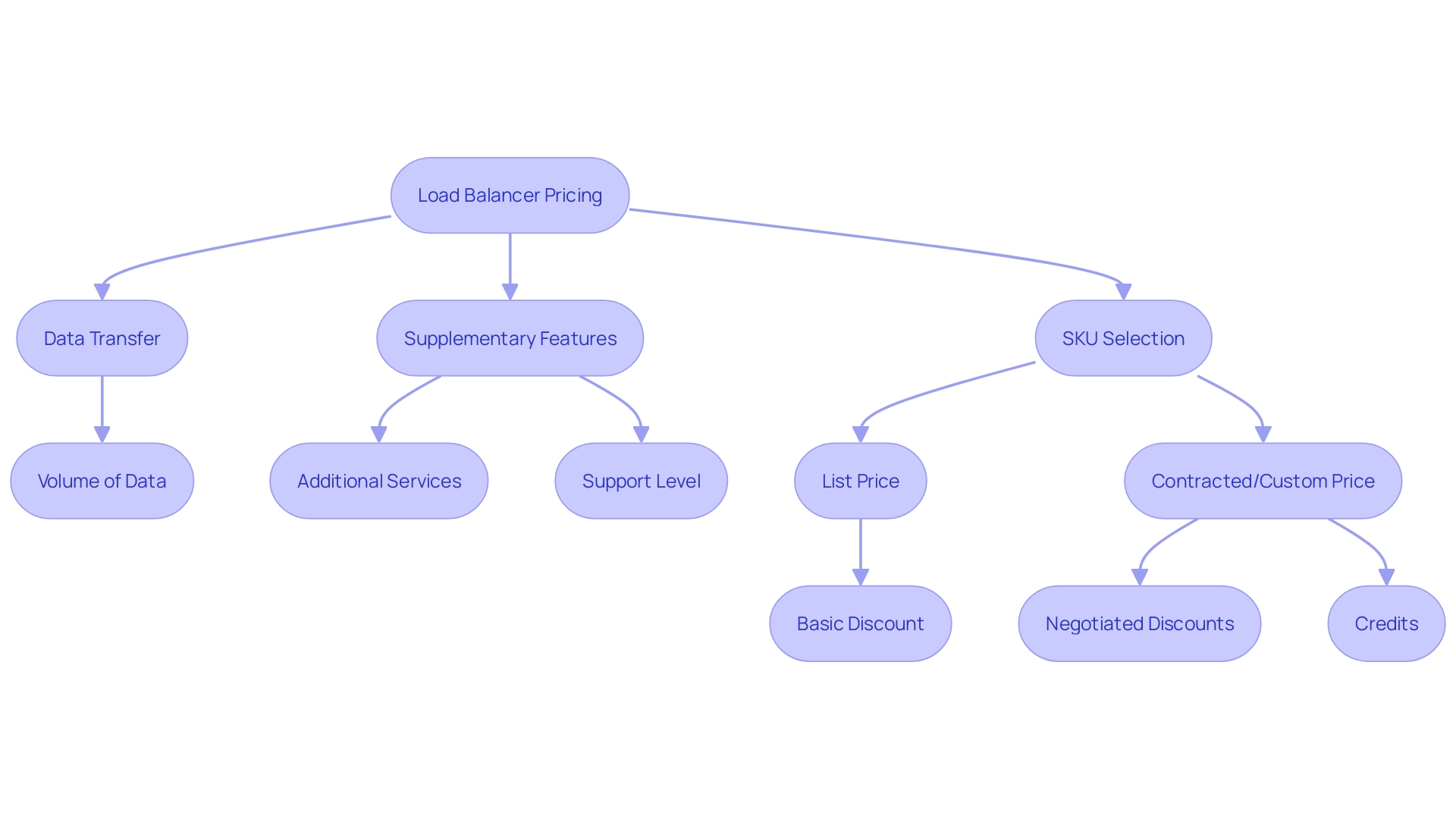
- Elastic IP Pricing
Managing the financial implications of Elastic IP addresses within AWS becomes crucial as the scarcity of IPv4 addresses has led to significant market changes. With IPv4 addresses now a finite resource, organizations seeking them are compelled to procure from holders of unused addresses, posing challenges in expenses and accessibility. Reflecting the historical context, the Internet Engineering Task Force (IETF) anticipated this shortage and developed IPv6 as early as 1995. However, the transition to IPv6 has been sluggish, with many companies finding the shift complex and gradual.
Amazon Web Services (AWS) has adapted to this changing landscape by monetizing in-use Public IPv4 addresses. As of February 1, AWS charges $0.005 per hour for these addresses, resulting in an annual expense of $44.80. This development is part of AWS's incentive for users to migrate to IPv6, which boasts a near limitless number of addresses. For AWS customers, it's crucial to assess IP address usage regularly and release any that are unnecessary to avoid unnecessary expenses.
AWS's pricing structure encourages careful planning and budgeting for IP resources. Utilizing tools like the AWS Pricing Calculator allows organizations to forecast expenses and identify opportunities for expense optimization. By understanding the nuances between list prices and negotiated prices, companies can navigate the complexities of AWS billing and manage their technology investments effectively.
Networking Costs
Managing networking expenses is crucial for optimizing your cloud budget. These expenses are influenced by the amount of information transfer, both incoming and outgoing, as well as the strategic utilization of content delivery networks (CDNs). By implementing network security measures such as firewalls and encryption, organizations can prevent unauthorized access and protect sensitive data, bolstering not just security but also efficiency, as seen in the case of Purdue University. This institution has shown remarkable management of expenses by not increasing tuition for over a decade while maintaining exceptional service levels for network operations.
To further minimize expenses, anticipating potential increases is crucial. For instance, moving IT infrastructure to the cloud commonly requires heightened network and internet bandwidth. Proactive planning for these expenses can prevent budget overruns. With the adoption of Software-Defined Wide-Area Network (SD-WAN) overlays, IT leaders are modernizing enterprise architecture, leading to a more digital, AI, and data-driven business landscape. This approach not only streamlines operations but also extends the lifespan of network devices and software components.
Moreover, leveraging tools like ThousandEyes can transform network management. As one business process services provider's Head of Global Network Services reports, issues that once took weeks to address can now be resolved in a matter of days. The ability to closely examine transactions, applications, and networks can provide invaluable insights into performance.
In conclusion, a well-informed approach that integrates both strong security and future-oriented investment in networking can result in substantial expense reductions and increased operational efficiency.
- Inbound Traffic
AWS resources receive information, and this incoming traffic incurs expenses proportional to the amount of information. By analyzing and understanding traffic patterns, along with implementing transfer optimizations, businesses can reduce these inbound costs. Organizations like GoDaddy have acknowledged the significance of efficient information management and have utilized AWS's wide range of services, which includes over 200 fully featured offerings, to optimize their operations. This array encompasses comprehensive solutions for compute, storage, databases, and more, enabling efficient information handling and analytics. Furthermore, AWS's dedication to customer preference and adaptability is emphasized by their practice of exempting charges for transferring information away for those transitioning to other services or on-site environments, guaranteeing that enterprises can efficiently handle their information without being impeded by transfer expenses.
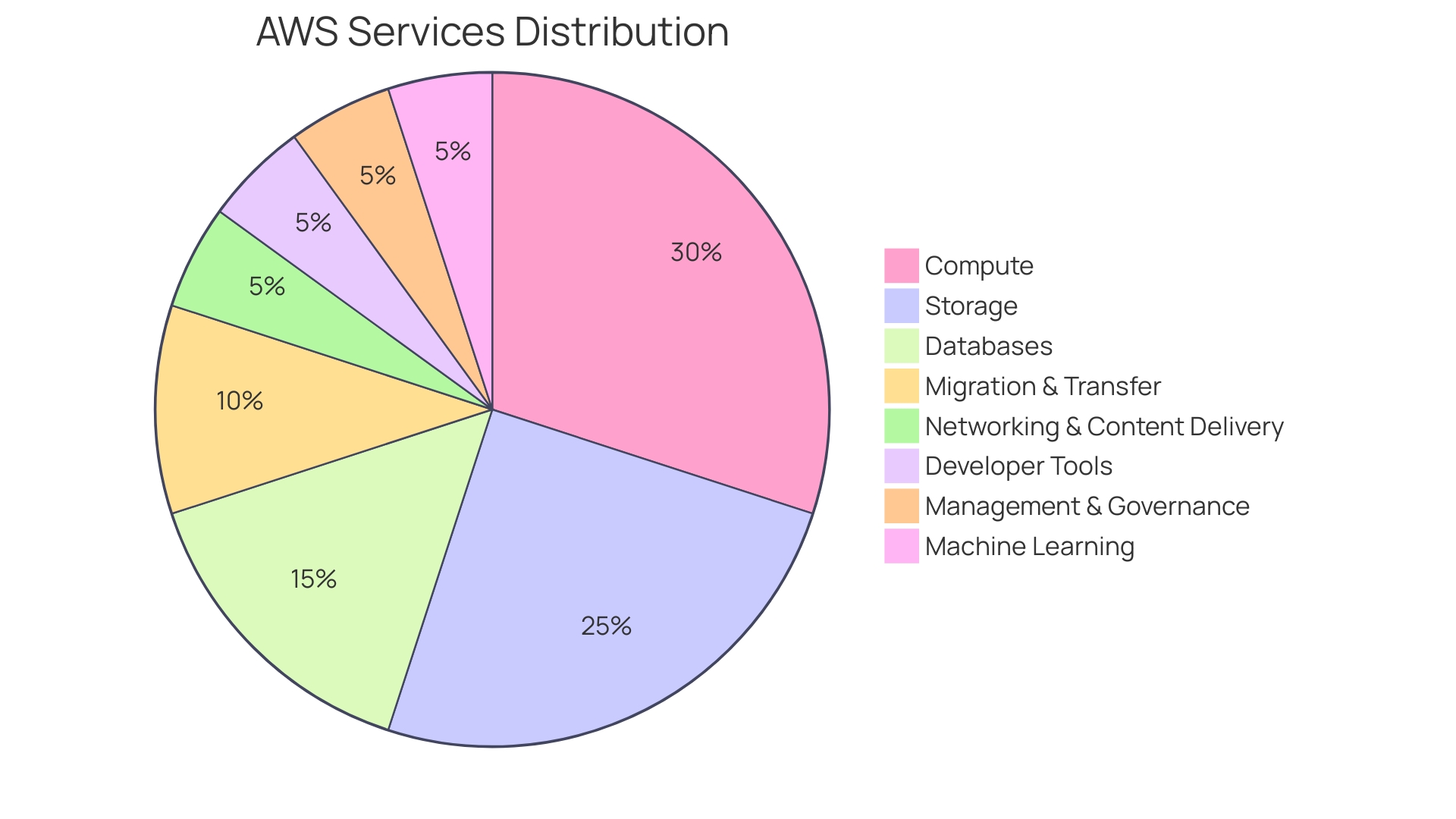
- Outbound Traffic
Efficient management of outbound traffic expenses in AWS is crucial for organizations seeking to optimize their expenditure. Data egress, the process where data exits the AWS network to the internet or to another provider, incurs charges based on the volume of data transferred. It's measured in gigabytes (GB) or terabytes (TB) and can significantly impact your cloud budget if not managed wisely.
To mitigate these costs, strategies such as implementing caching mechanisms can be employed. Caching stores frequently accessed information locally or at strategic network points, reducing the need to transfer information repeatedly across the network, thus decreasing outbound traffic volume. Furthermore, enhancing the transfer methods guarantees that only essential information is transmitted, while employing compression methods to reduce the size of the information.
AWS has demonstrated its commitment to customer flexibility and optimization of expenses by waiving data transfer out to the internet (DTO) charges in specific scenarios, providing a broader range of options for data migration. This decision emphasizes AWS's position as a platform that offers a wide range of services tailored to support diverse workloads in the cloud while promoting efficiency in expenses.
Real-world successes of AWS's capabilities to enhance efficiency and reduce expenses are evident in examples such as GoDaddy's initiative to optimize batch processing jobs. The company's data-driven approach has been pivotal in making informed business decisions, improving customer satisfaction, and maintaining a competitive edge with over 20 million customers worldwide.
Moreover, the integration of advanced technologies like Amazon Rekognition to streamline traffic management signifies the potential of AWS services to transform operational processes. By utilizing AI to alleviate congestion and decrease maintenance expenses, AWS demonstrates how cloud technologies can be harnessed to enhance public infrastructure and improve quality of life.
For businesses, the capability to efficiently manage AWS expenses, including those linked to outbound traffic, is crucial in preserving financial health and promoting innovation. By leveraging AWS's comprehensive suite of services and adopting cost-efficient practices, organizations can enjoy the benefits of computing in the atmosphere without compromising on performance or scalability.
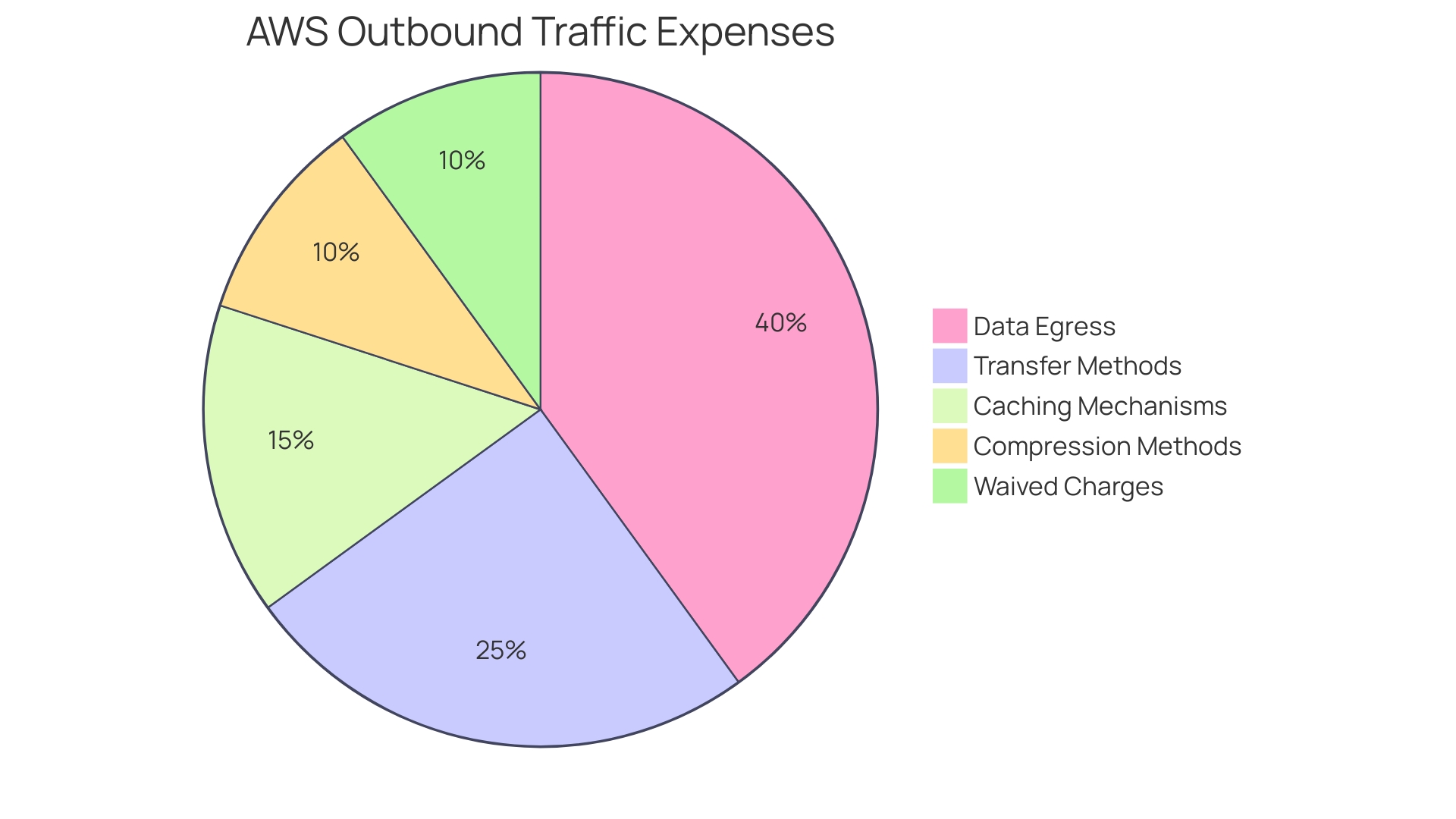
Example Architectures and Their Costs
Grasping the intricacies of AWS cloud hosting expenses can be a complex endeavor. It requires evaluating a variety of factors, including usage frequency and the specific measures of expense analysis. To illustrate this, let's consider a generative AI project where these elements are critical. For example, if an application is expected to have sporadic usage, the financial implications differ significantly from those with constant, high-volume traffic.
The expense of egressing information—the procedure for transferring information from AWS to the internet or another provider— is a significant element in your AWS statement. When utilizing cloud services, the costs for outbound data transfer, which are typically based on the volume of data transferred, can quickly accumulate even with small increments. It's crucial to comprehend this, as managing egress effectively can be essential in controlling cloud spending.
Moreover, the recent news that AWS customers can now benefit from free transfers out to the internet to migrate to another IT provider is a notable development. This emphasizes the significance of taking into account transfer costs when assessing the total cost of ownership.
When examining example architectures, it's also vital to consider the latest advancements in cloud infrastructure. AWS's dedication to enhance its worldwide infrastructure with new regions in the Kingdom of Saudi Arabia and Mexico—with investments amounting to over $10 billion—demonstrates the platform's scalability and the potential for localized information solutions. This expansion can impact hosting expenses by providing greater geographical flexibility and potentially reducing latency and data transfer fees.
A real-life example from BT Group, which utilized Amazon Q Developer for its engineers, led to a notable decrease in repetitive tasks and a tangible reduction in expenses, illustrating the advantages of utilizing AWS services for operational efficiency.
Embracing a cloud-first strategy enables businesses to leverage state-of-the-art hardware and take advantage of a pay-as-you-go pricing model, but it also necessitates a comprehensive comprehension of the expenses entailed. It is important to involve key stakeholders from both technology and finance teams within an organization to ensure that all aspects of expenses and utilization are considered throughout the journey.
To summarize, taking into account elements such as project scope, egress fees, and the most recent advancements in AWS services, companies can obtain a more defined understanding of the expenses associated with their AWS cloud hosting solutions.
- Basic Environment (Website Hosting)
Deploying a client's website or blog on the public domain requires a robust infrastructure that ensures fast, secure, and scalable access to content across the internet. A typical AWS Cloud Services setup for hosting might involve EC2 instances to run web servers, an RDS database for dynamic data management, and an S3 bucket for storing static content like HTML files, images, and scripts.
When considering the architecture of the application that the database is supporting, it is crucial to take into account the financial aspect. Questions like the number of deployments, whether the application will run in a single region or multiple, and the choice between single or multiple availability zones (AZs) must be addressed. Every choice made in this place will not just impact the system's structure but also its linked expenses. Moreover, AWS's pay-as-you-go pricing model allows for a detailed understanding of the monthly bill by selecting the deployment type, I/O configuration, and additional features accordingly.
Storage expenses, especially for services like AWS S3, are significant for reducing per unit over time. However, as the volume of data stored typically increases at a greater rate, it's crucial to optimize storage costs. Understanding AWS's pricing model is essential for cost-effective use of S3 and avoiding unexpected expenses.
Essentially, the decision between developing a solution within the company and purchasing a service like AWS's offerings comes down to the particular requirements and capabilities of the organization. While the cloud presents modern, scalable, and elastic workloads with up-to-date hardware, it also requires a learning curve. For organizations with legacy applications or those with particular regulatory requirements, an on-premise solution might be more suitable.
Lastly, it's imperative to recognize that website performance and user experience are key to customer retention. Efficient loading times and a seamless interface are essential for e-commerce success, with potential financial implications linked to the architecture and services chosen for the website's infrastructure.
- Intermediate Environment (High Performance Website Hosting)
To support the growing demands of high-traffic websites, organizations may incorporate a range of AWS Cloud Services designed to enhance performance and reliability. Such an advanced configuration would likely involve Elastic Load Balancers, which distribute incoming application traffic across multiple targets, Auto Scaling groups that automatically adjust compute capacity to maintain steady performance, and Amazon CloudFront, a content delivery network (CDN) service that securely delivers information, videos, applications, and APIs with low latency and high transfer speeds. While these services contribute to a more robust environment capable of supporting websites like Dunelm's, which experiences over 400 million sessions annually, they also escalate the overall expenses due to higher resource consumption and information transmission rates.
In the context of data transfer, it is essential to understand the implications of data egress—when data exits the AWS network to reach end-users or other networks. This is a crucial factor in expense management, as AWS charges for egress by the GB or TB per month. But with smart architecture decisions, similar to the Ford Foundation's transition to a more dynamic content management system using WordPress' block editor for richer web experiences, organizations can balance performance requirements with financial efficiencies.
The significance of these services is underscored by instances such as the volumetric DDoS attack reported by Bleeping Computer, which highlights the importance of a resilient infrastructure capable of withstanding unprecedented levels of network traffic. AWS's suite of services offers such resilience, as emphasized by Steve Jobs' quote on embracing new technologies. By leveraging these services, organizations can aim to strike a balance between the high performance of digital platforms and the costs associated with maintaining such an environment.
- Advanced Environment (Highly Scalable and Available)
When architecting applications for peak performance and scalability, the choice of AWS services is paramount. For instance, Amazon Aurora provides a robust database solution renowned for its high availability and scalability, which is particularly advantageous for applications like those Vertex Pharmaceuticals uses in drug discovery, where they process extensive datasets using machine learning techniques. Amazon ElastiCache offers an efficient caching layer, crucial for high-throughput applications requiring rapid information retrieval, similar to the best practices outlined in the ElastiCache Well-Architected Lens.
Furthermore, Amazon Redshift serves as a powerful data warehousing tool, allowing organizations to analyze vast amounts of data seamlessly. This aligns with AWS's serverless innovations that enable scaling to millions of transactions a second, adapting to workload patterns for optimized performance and expenses, as emphasized in recent AWS announcements. The integration of these advanced services, while contributing to a higher cost, ultimately provides a formidable environment tailored to meet the demands of the most complex and data-intensive workloads.
Tips for Reducing AWS Costs
To effectively manage and reduce AWS cloud hosting expenses, it's crucial to implement a structured approach inspired by best practices in the industry. For instance, GoDaddy's initiative to optimize batch processing jobs is a testament to the power of data-driven decision-making. With over 20 million customers, GoDaddy's commitment to efficiency led to the development of a seven-layered methodology for improvement opportunities, enhancing operational efficiency with Amazon EMR Serverless.
Likewise, Vertex Pharmaceuticals' use of machine learning for analyzing experimental data exemplifies the innovative use of AWS services to drive cost-efficiency and agility in drug discovery processes. Their strategic application of image segmentation techniques demonstrates how AWS can facilitate complex, data-intensive tasks.
Furthermore, the latest developments in AWS Supply Chain services are created to support organizations in predicting, restocking products, and optimizing supplier communications, which are crucial for minimizing inventory expenses and promptly addressing market demands.
Understanding AWS pricing models is crucial for optimization of expenses. AWS offers various pricing options, including on-demand, reserved instances, and spot pricing—each tailored to different usage and budgetary requirements. Eyal Estrin, an architect specializing in information security and cloud computing, emphasizes the significance of developing solutions and evaluating expenses prior to implementation in order to effectively plan budgets and discover opportunities for cost savings.
In the evolving landscape of internet protocols, the slow adoption of IPv6 poses challenges for companies needing IPv4 addresses. This historical context underscores the need for forward-thinking strategies to address present and future technological constraints.
By embracing these insights and strategies, organizations can optimize their AWS hosting expenses, ensuring that technology investments align with business objectives and contribute to continuous innovation.
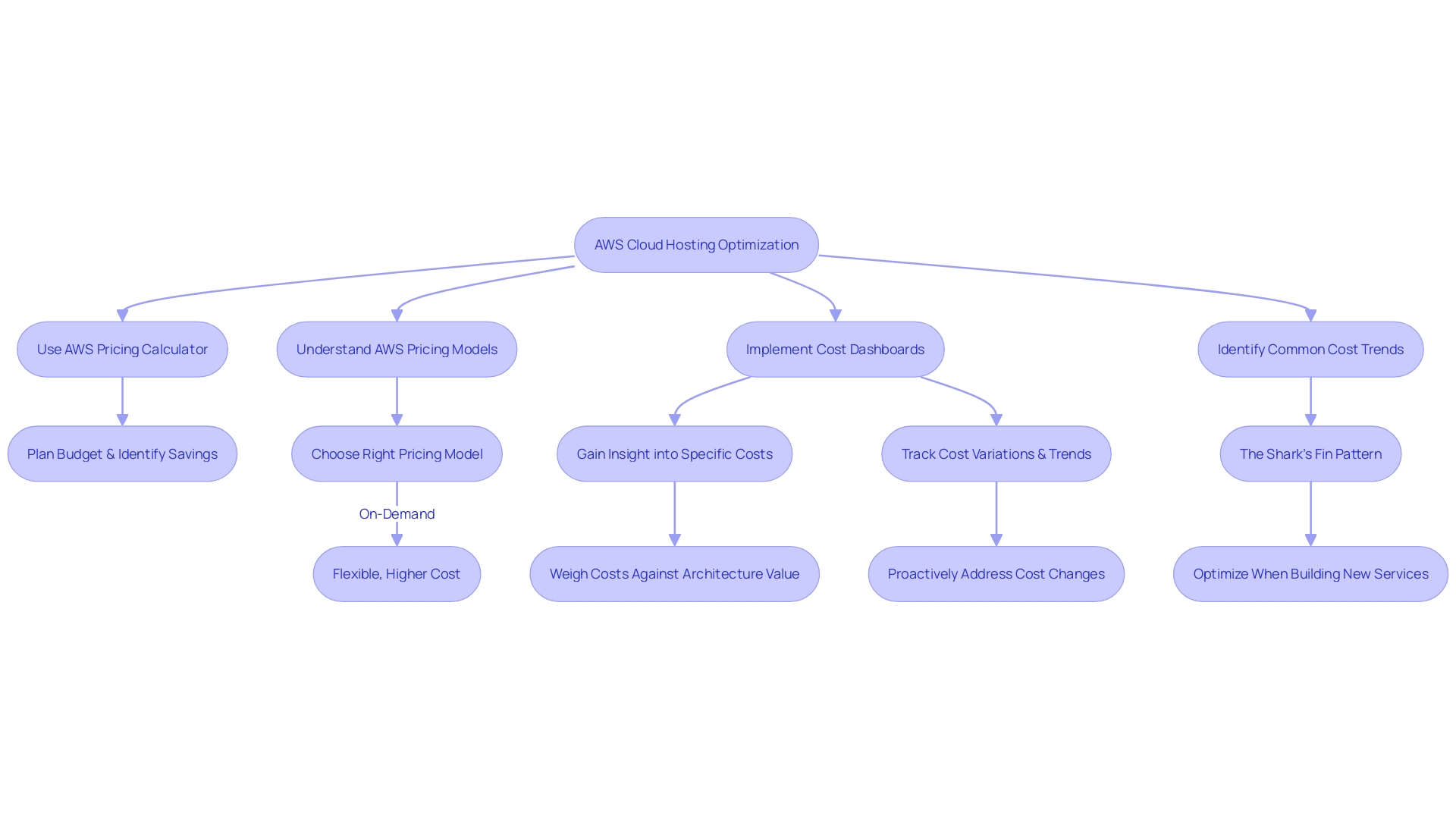
- Using Spot Instances
Spot instances present a uniquely economical opportunity within the AWS suite, giving users the ability to bid on unused EC2 capacity. Companies can take advantage of these instances for flexible, non-essential workloads, capitalizing on the potential for significant expense reductions. A prime example of strategic spot instance utilization is GoDaddy, a global web hosting powerhouse aiding entrepreneurs in establishing their online presence. GoDaddy's data-centric business model and continuous optimization drive, including efforts in batch processing jobs, exemplify the type of efficiency gains achievable through informed AWS resource management.
The ever-changing nature of resource allocation in the virtual environment and effective management of expenses necessitates a thorough comprehension of billing frameworks and continuous monitoring of real-time usage. Selecting the correct instances and pricing models, such as On-Demand, Reserved Instances, or Spot Instances, is crucial. For instance, Amazon Elastic Container Service (ECS) users should carefully match their application's needs with the appropriate EC2 instances, further optimizing through ECS Auto Scaling to dynamically adjust service tasks based on demand.
Additionally, as noted by industry professionals like Gaurav Garg, a Sr. Technical Account Manager at AWS, and Ratnesh Jamidar, an AVP Engineering at Sprinklr, building scalable and cost-effective solutions on AWS is foundational to meeting business requirements while emphasizing security and database management. Their combined experience highlights the significance of utilizing AWS's adaptable pricing models, including spot instances, to uphold cost-effective and high-performing infrastructure.
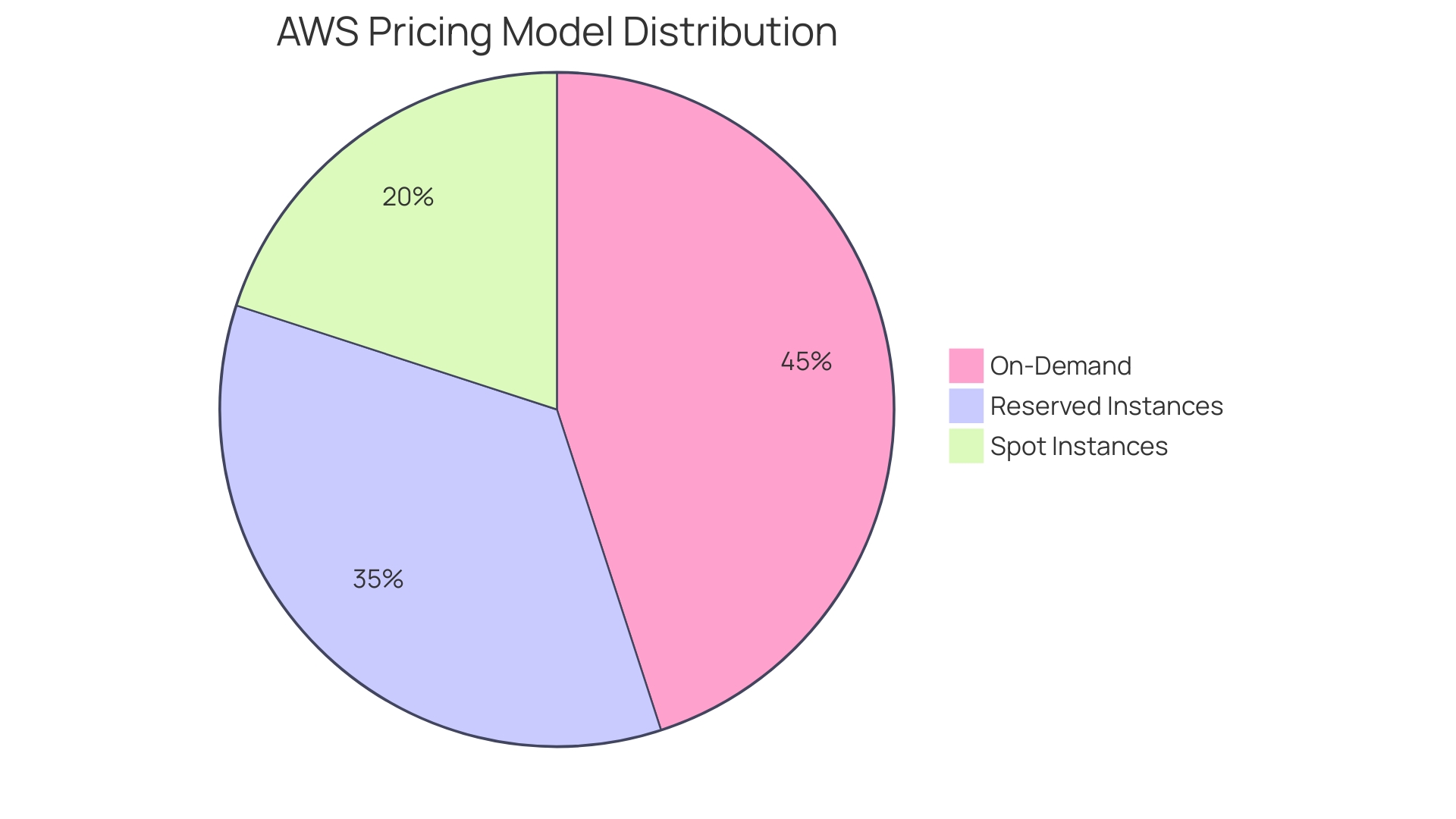
- Using Reserved Instances
When it concerns computing in the sky, astute enterprises are continuously searching for methods to enhance and decrease expenses without compromising performance or dependability. Reserved Instances (Ris), an optimization mechanism offered by Amazon Web Services, exemplify this approach. Intended for long-term use, Ris provide a more cost-effective alternative to On-Demand Instances by offering discounted rates in exchange for a committed usage period.
GoDaddy, a company that supports millions of entrepreneurs worldwide, exemplifies a data-driven approach that necessitates efficient batch processing jobs. They, similar to numerous others, could stand to gain from the tactical deployment of Ris as part of their infrastructure. By securing reduced prices for extended periods, they can greatly decrease their operational expenses.
Statistics from Vantage, a cloud expenditure management platform, indicate that in the competitive cloud marketplace, the use of EC2 instances is evolving, with trends showing a decrease in EC2 spend as other cloud providers gain traction. For businesses leveraging EC2, comprehending the balance between expense and utility becomes even more crucial.
Reserved Instances offer a compelling proposition, as highlighted by the marketplace for EC2 reserved instance contracts. However, it's important for businesses to remain vigilant about the potential for high fees charged by some RI vendors, which can range from 15% to 40% of savings realized. This requires a meticulous assessment of vendor agreements to guarantee that savings are maximized.
Ultimately, the integration of technology and finance teams within an organization is crucial for managing costs effectively. By combining their expertise, companies can navigate the intricate pricing models of online services, such as those offered by AWS, to enhance their bottom line. Through strategic planning and the judicious use of Reserved Instances, organizations can achieve both their financial and technical objectives, ensuring a robust and cost-efficient cloud infrastructure.
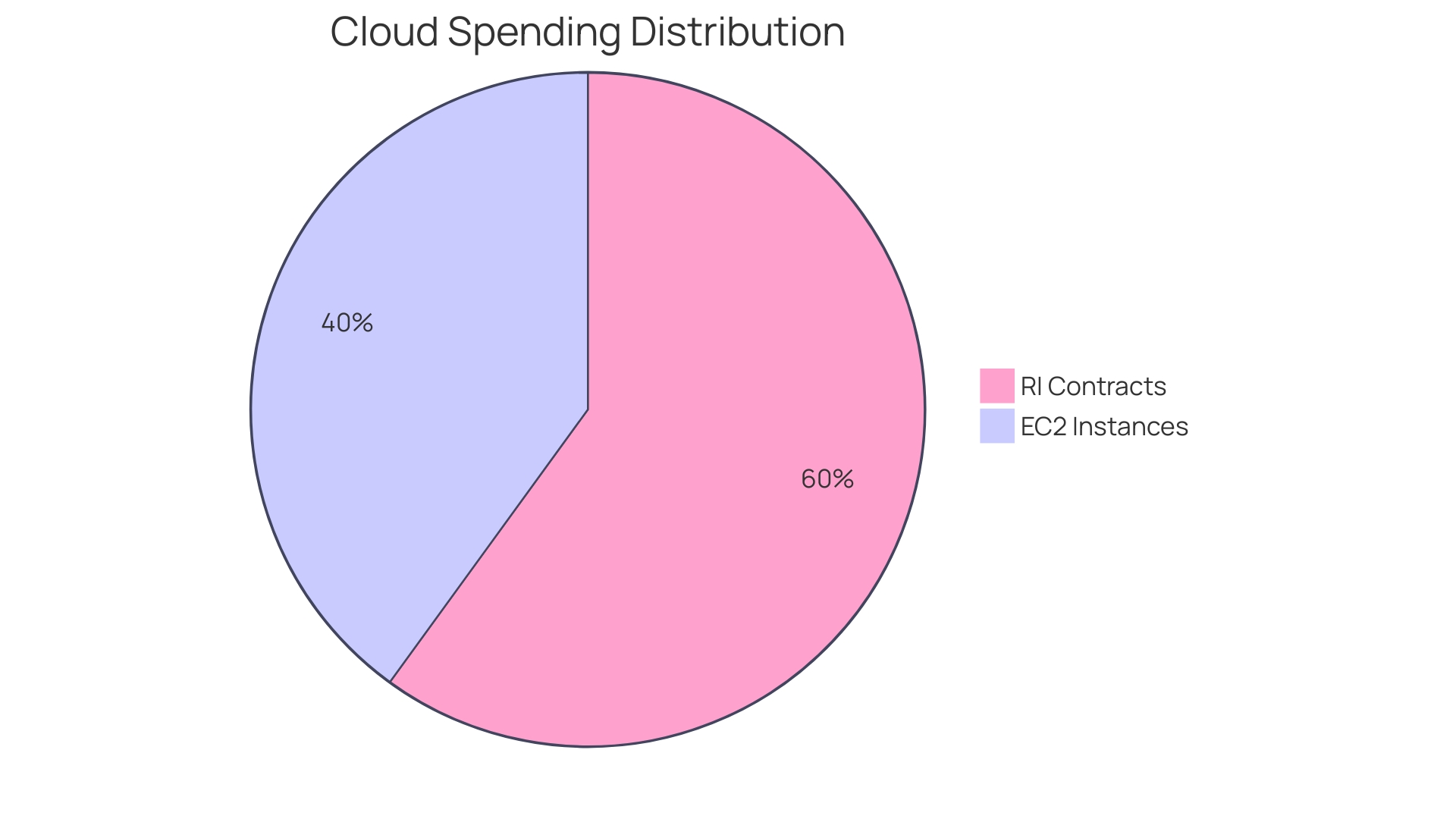
- Using Fully Managed Services
Organizations leveraging AWS Cloud Services can experience significant benefits from fully managed solutions such as AWS Lambda and AWS Fargate. These services embody AWS's commitment to streamlining operational efficiency, as highlighted by industry professionals like Rushikesh Jagtap and Tayo Olajide, who have successfully utilized AWS capabilities to architect modern data analytics solutions. For instance, AWS Lambda's serverless computing model eradicates the need to manage servers, allowing teams to focus solely on coding and deploying applications. On the other hand, AWS Fargate simplifies container management by eliminating the need to provision and scale clusters of virtual machines for running containers, which can greatly reduce operational expenses.
AWS's innovative approach is further evident in the advancements of AWS Supply Chain, which integrates new features such as sustainability and AI-assisted forecasting, aiding businesses to optimize their supply chains. Furthermore, the integration of diverse AI models, like Anthropic’s Claude 2.1 in Amazon Bedrock, offers tailored solutions to complex needs, demonstrating AWS's foresight in a zero ETL future.
The selection between AWS Lambda and Fargate should be dictated by the unique requirements of the project, considering factors like container image standardization and registry management. Notable organizations, including GoDaddy, have embarked on initiatives to optimize their operations using AWS services, showcasing real-world applications and benefits. As the landscape of cloud computing evolves, AWS continues to offer a variety of managed services that cater to the dynamic needs of businesses, empowering them to innovate and make data-driven decisions efficiently.
- Monitoring Amazon CloudWatch Costs
Leveraging Amazon CloudWatch, organizations can dive deep into the performance and operational health of their AWS resources. This powerful tool enables businesses to monitor, track, and analyze metrics, set alarms, and automatically react to changes in their AWS environment. For instance, the multinational corporation ICL, which operates in harsh mining conditions, has transitioned from traditional manual monitoring to sophisticated technological solutions. With CloudWatch, ICL can now oversee their industrial equipment more efficiently, mitigating the risk of costly machinery failures and environmental damage.
Additionally, companies like GoDaddy have harnessed CloudWatch to enhance their batch processing jobs, emphasizing the service's capacity to support data-driven decision-making and customer satisfaction. This reflects the broader trend as AWS continues to evolve, offering services essential to the operations of businesses, government agencies, and individuals, as seen with their disruption-causing outages.
Amazon CloudWatch also contributes to optimization by providing visibility into resource usage, allowing organizations to pinpoint areas for savings. For example, the Anomaly Detection feature of CloudWatch Logs helps users identify irregularities within vast volumes of log data, leading to quicker resolution of issues. In conjunction with its integration into the AWS management suite, CloudWatch plays a vital role in enabling organizations to plan their budgets and effectively manage expenses, as they only pay for the resources they utilize. Such capabilities make Amazon CloudWatch an integral component of AWS's platform, recognized for its affordability and flexibility.
- Considering Bandwidth Costs
Optimizing AWS bandwidth costs is crucial for businesses relying on cloud services. Prominent companies, like GoDaddy, Vertex Pharmaceuticals, and Chess.com, have shown the significance of efficient information exchange within their operations. GoDaddy, with its extensive customer base, utilizes AWS to enhance batch processing jobs, highlighting the importance of cost-effective transfer solutions. Similarly, Vertex Pharmaceuticals utilizes machine learning for drug discovery, which involves the transfer and analysis of substantial information sets, highlighting the necessity for high-speed and cost-efficient connectivity options.
Meanwhile, with millions of users engaged in online chess daily, Chess.com's IT infrastructure demands robust and economical transfer methods to maintain seamless global connectivity. The introduction of AWS Direct Connect and AWS Global Accelerator addresses these needs by providing dedicated network connections, reducing latency, and potentially lowering network costs. These services are particularly advantageous for organizations like a New York financial institution, which requires real-time feeds from Tokyo for high-frequency trades where even slight delays can have significant repercussions.
Additionally, AWS's recent policy modifications, such as exempting transfer out (DTO) fees for specific situations, demonstrate an increasing inclination towards promoting information mobility and interoperability. The European Union's European Data Act, scheduled to come into force in September 2025, requires simpler migration of information and applications between providers, without any extra charges. This act, along with the adherence of providers to the SWIPO (Switching Providers and Porting Data) agreement, exemplifies the evolving landscape of services, where flexibility and efficiency are paramount.
In conclusion, the strategic use of AWS networking services, combined with an understanding of the latest industry developments, can significantly reduce bandwidth costs and enhance data transfer efficiency. It's a crucial consideration for any organization striving to optimize cloud operations and expenditure.
Conclusion
In conclusion, understanding AWS cloud hosting costs is crucial for businesses to optimize their expenses. Key components include storage, computing power, networking, and data transfer fees. By selecting the right storage solutions, such as Amazon EBS and S3, and utilizing pricing models like On-Demand and Reserved Instances, businesses can reduce costs.
Implementing security measures and leveraging tools like ThousandEyes for performance insights can help control networking expenses. To manage AWS costs effectively, businesses should use strategies like spot instances, reserved instances, and fully managed services like AWS Lambda and Fargate. Monitoring performance and costs with tools like Amazon CloudWatch and considering bandwidth costs can further optimize expenses.
By staying informed about AWS updates and making informed choices, businesses can maximize their investments in AWS while maintaining operational efficiency and innovation.




